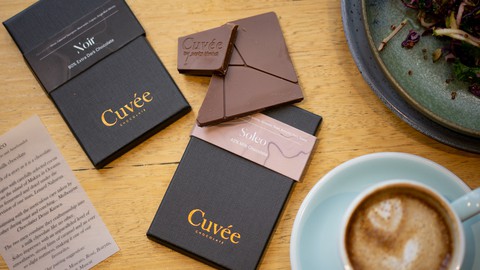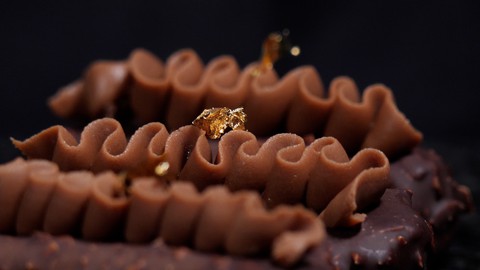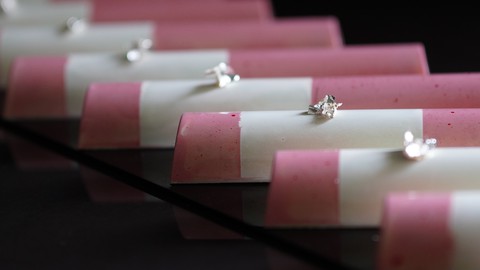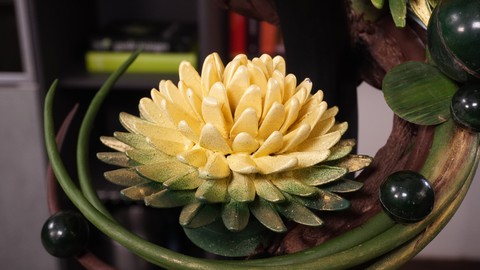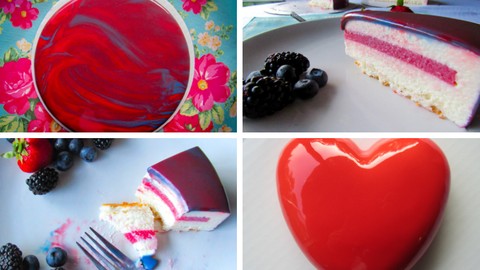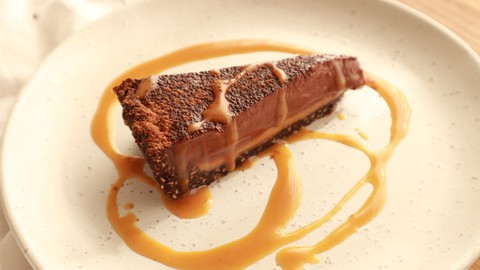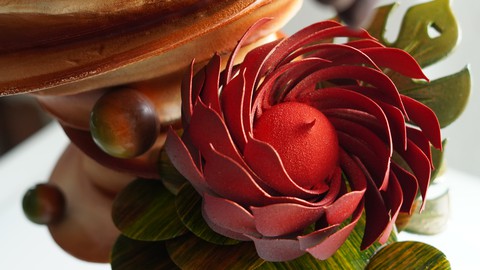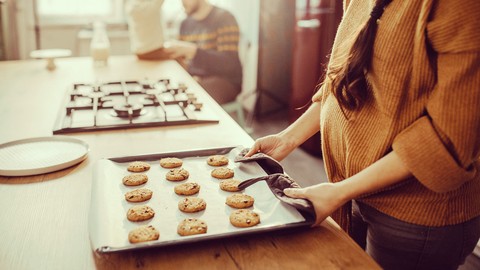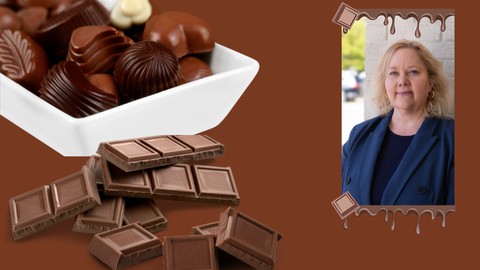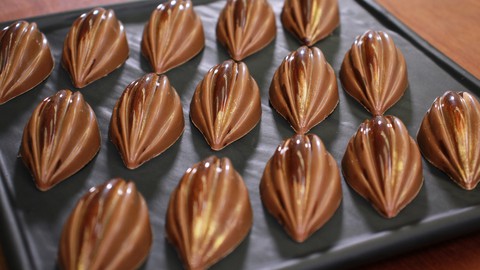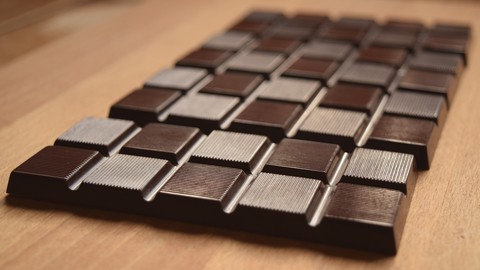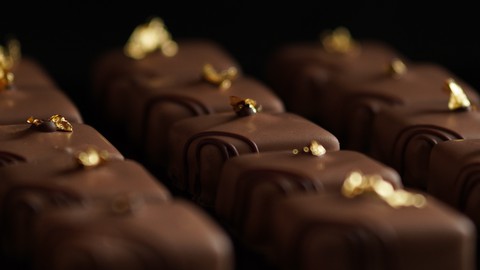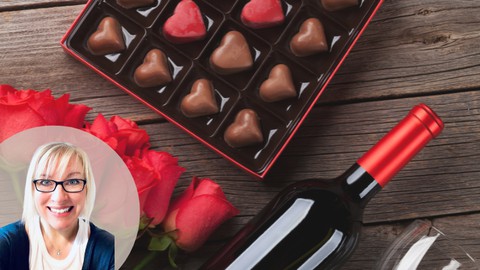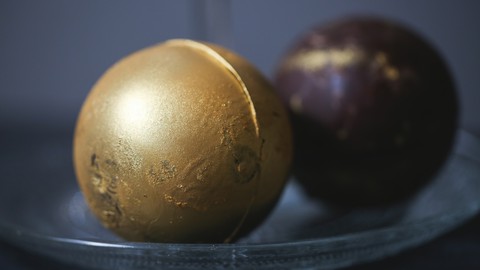What you'll learn
- 🍫 Discover the intriguing world of chocolate, from its rich history and ethical considerations to the nuances of bean-to-bar production and the differences between single estate and single origin chocolate. Plus, learn the art of tasting chocolate like a professional!
Course Content
Introduction
1 lectureWelcome to your Chocolate Master Class :)
You're on your way to becoming your very own Chocolate Expert.
In this chapter:
I will say hello, and introduce your course.
Where does the world's best chocolate come from?
1 lectureYou will hear me say often that not all chocolate is created equal; and if you're going to be a chocolate expert - you need to know what the world's best chocolate is.
In this chapter you will learn:
Where the best chocolate in the world comes from.
Dispel some common myths about where great chocolate comes from.
Understand the subtle difference between where the best cocoa beans are grown versus where the best chocolate is made - and understand which countries excel at each.
The different types of cocoa beans, and their different quality - which one’s taste like a supermarket tomato (i.e. no flavour) and which ones are rare ‘flavour beans’.
The role of the obsessive chocolate maker in making great chocolate.
These two things are critical in making good chocolate, I often call it the art and science of chocolate making. Of course, there's always a dose of magic involved too.
Why does ethical chocolate matter?
1 lectureEthics matter in chocolate. Did you know that
Almost 2 million children work in the cocoa industry in Ghana and the Ivory Coast?
Most cocoa farmers from West Africa (where 85% of cocoa comes from) earn below the global poverty line of $1.90 a day?
There are still slaves used in the production of cocoa?
Most of us don't realise when we each for our favourite sweet treat, that the chocolate industry is a very dark industry; where a lot of abuse and poverty exist. And no-one wants their sweet treat to be at the expense of others.
In this chapter you will learn:
More about the conditions of the cocoa growers.
Why it is important to know where your chocolate comes from.
The difference between fair trade and direct trade - and why direct trade matters.
Tips on how to find and enjoy ethical chocolate - what I like to call guilt free chocolate.
Spoiler alert, it's not all bad news. There are lots of companies doing great things with ethical chocolate and with this chapter we hope you join us as part of the solution, and not the problem, and continue your love of chocolate with pride in your choices.
The history of chocolate | from the Olmecs to the Aztecs
1 lectureChocolate is not a modern food. It has a very long history dating back thousands of years to the Olmecs, Mayans and Aztecs where it was revered as ‘the food of the gods’ and used not just in many cultural and religious rituals (human sacrifice anyone) but also as currency.
In this chapter you will learn:
The fascinating history of cocoa throughout Meso-American communities up to the Aztecs.
The ritualised use of cocoa including it’s bloody history.
Who was - and wasn't allowed - to consume cocoa in Aztec culture, and some of the stories around this.
The use of cocoa as a currency - and how many beans you would need to buy a ripe tomato versus a human sacrifice.
What the Europeans thought of cocoa and the Aztecs as the first European explorers arrived in the Aztec communities in the early 1500’s.
The history of chocolate - enter Europe
1 lectureFinally cocoa arrived in Europe where it was first a secret in the Spanish Court before it became well known and drove the debauchery of the most fashionable establishments in 17th century London. All very different to how we think about chocolate today.
At this stage it was also a drink, and through various societal changes in the 1800’s we start to see chocolate like we know it now. Modern chocolate is a very new thing.
In this chapter you will learn:
How cocoa finally made it to Europe.
How it was kept an exclusive secret, before it made it it’s way to France.
The reputation cocoa had for driving the debauchery of fashionable London.
And why cocoa was so exclusive and expensive in 17th century London.
How chocolate changed in the 18th century to being a highly exclusive drink, to the modern chocolate bar we know now.
When and who produced the first ever chocolate bar in the 1800’s.
The forces at play influencing the development of mass market chocolate, leading us to where we are today.
Single Origin v Single Estate Chocolate
1 lectureLet's bring chocolate back to now and take your next step to being a chocolate expert.
To help you understand what is good chocolate versus mass market chocolate a discussion around single origin chocolate versus single estate chocolate is important.
In this chapter you will learn:
What the term Single Origin means - and why it is a complicated term that may or may not indicate quality.
What the term Single Estate (or Single Plantation) means - and what to expect from this type of chocolate.
We will introduce you to the concept of terroir in your chocolate and how this will influence the flavour of your chocolate.
How Single Estate chocolate leads to greater transparency around worker conditions.
A Sensory Experience - How to Taste
1 lectureDo you know how to eat chocolate? Most people pop it in their mouth, chew, swallow - and move on to the next piece.
But what if I told you that wasn’t the way to eat chocolate, not least if you’re going to be a chocolate expert.
Eating chocolate is a wonderful experience, so we’re going to slow you down and make it a sensory experience.
In this chapter you will learn:
How to use your five senses when eating chocolate, and why this matters.
How to use the flavour wheel to really identify the specifics of what you are tasting.
How to develop your palate as you continue to experience chocolate (or any other food/drink - the same principles of flavour apply).
Why your senses matter so much to your experience of taste, particularly your smell.
Why the melting point of chocolate makes it the perfectly paired treat for the human body.
Understand why great chocolate can offer you so much more in taste and experience than mass market chocolate.
Taste With Me - Dark Chocolate
1 lectureTaste With Me | Dark Chocolate
1 lectureNow the fun starts!
You’ve learnt all there is to know about chocolate, now you get to starting eating chocolate. Don’t forget to use the skills you learnt in Chapter 7 to slow down, and use your five senses for a full sensory experience.
In this chapter you will learn:
Why you always taste the darkest chocolate first - and the lightest (i.e. milk) last.
Why a palate cleanser is useful whilst tasting.
Why percentage doesn’t matter.
Why 100% chocolate doesn’t need to be bitter.
Some of the best brands in the world that I’m tasting, along with how you can experience the flavour profile found in them.
The fascinating stories behind each chocolate - good chocolate always has a story.
What is Soy Lecithin and does it matter?
Put into practice using your five senses and really paying attention to flavour profiles.
Explore your own perceptions flavour and experience as you taste your own chocolate.
What you need for this chapter:
I recommend you have three - four dark chocolates - see below.
The flavour wheel from Chapter 8.
Download the Shopping List from the Resources.
A palate cleanser - see the Shopping List in resources; this can be as simple as water.
Chocolate tasting notes
If you have purchased a Chocolate Tasting Pack from us, these will be included.
Or refer to the packaging of your chocolate which should contain some notes.
Which dark chocolates?
If you are in Australia, you can purchase the chocolates used in this video, or a Chocolate Tasting Pack from Fiamma Chocolate *
If you are not in Australia, I have included the chocolate I will be tasting in the Shopping List, see Resources, which you can buy locally.
If these chocolates aren’t available to you (they can be hard to find, or may be out of your budget) just buy whatever chocolate works for you - after all, this is meant to be fun!
Do try and get the best quality you can! It really does make a difference.
What percentage?
Dark chocolate isn’t about percentages per se, but more flavour profile. As long as it doesn’t have milk or similar products in it, it is dark.
Having said that, dark chocolate can start at around 50% cocoa solids up to 100%. Purists would argue 70% and above, but at the end of the day, it is personal preference.
We’ll discuss in this course why percentage doesn’t matter and in deciding which dark chocolate you will taste. For example:
It can be interesting to have a variety of percentages, e.g. 56%, 62% and 70%.
It can be equally as interesting to taste several chocolates that share the same percentage, e.g. 70%, and look for the difference in the flavour profiles.
* subject to stock availability, if unavailable we will happily recommend alternatives.
Taste With Me | Milk Chocolate
1 lectureNext, it is milk chocolate. By now, you should be pretty good at tasting chocolate and we’re going to move on to the sweeter stuff. You would have also learnt in Chapter 9 why we always eat dark chocolate before milk or white chocolate.
In this chapter you will learn:
The problem with commercial chocolates - ingredients, taste, ethics and experience.
What adding milk to chocolate can do to flavour.
Why opening your mind to try new chocolate is a good thing, e.g. experiment with milk if you're a dark person.
What percentage good quality milk chocolate should be - and how the commercial brands compare.
How bean growing conditions can make one milk chocolate taste smokey.
What is blonde chocolate - and the accident that created this exceptional chocolate.
How to ‘freestyle’ your chocolate tasting and combine different chocolates for a new flavour experiences.
Is white chocolate really chocolate?
What you need for this chapter:
I recommend you have three - four milk and/or white chocolates - see below.
The flavour wheel from Chapter 8.
Download the Shopping List from the Resources.
A palate cleanser - see the Shopping List in resources; this can be as simple as water.
Chocolate tasting notes
If you have purchased a Chocolate Tasting Pack from us, these will be included.
Or refer to the packaging of your chocolate which should contain some notes.
Which milk chocolates?
If you are in Australia, you can purchase the chocolates used in this video, or a Chocolate Tasting Pack from Fiamma Chocolate *
If you are not in Australia, I have included the chocolate I will be tasting in the Shopping List, see Resources, which you can buy locally.
If these chocolates aren’t available to you (they can be hard to find, or may be out of your budget) just buy whatever chocolate works for you - after all, this is meant to be fun!
Do try and get the best quality you can! It really does make a difference.
* subject to stock availability, if unavailable we will happily recommend alternatives.
It's a Wrap
1 lectureDescription
Do you love chocolate? 🍫 Do you want to become a chocolate expert?
For many of us, chocolate is a delightful treat that we've enjoyed since childhood. But did you know that there’s a rich and fascinating history behind this sweet indulgence? 🎉
Join us in this comprehensive pastry course, where I, a seasoned chocolate expert, will guide you through the journey of this delicious creation:
-
Travel back in time to the Olmec and Aztec civilizations, where the love of cocoa began—long before it reached European shores. 📜
-
Discover how chocolate was a treasured secret of the Spanish before it became the notorious indulgence of London in the 1650s. 🇪🇸🇬🇧
-
Equip yourself to become your very own chocolate connoisseur, learning how to find the world's best chocolate. 🌍
-
Master the art of truly experiencing chocolate—learn to savor it as a wine connoisseur enjoys wine (without spitting it out!). 🍷🍫
What you need 📋
-
Have some milk and dark chocolate ready for the final chapters where you'll taste alongside me. 🍫🍪
-
Ideally, get some high-quality chocolate. I've included recommended brands in the course notes. 📚
-
If you're in Australia, purchase these from my online store, Fiamma Chocolate, for door-to-door delivery. 🇦🇺🏠
-
If you're elsewhere, search for these or similar brands locally (Google is your friend). 🌐
-
-
Warning: Supermarket chocolate is accessible but lacks in quality and flavor profile. If possible, invest in better chocolate. If not, use what you have—this experience is meant to be fun and indulgent after all! 🛒😊
-
Utilize our Chocolate Tasting Wheel in the "How to Taste" chapter—you can print it or access it online. 🔄🖨️
Who this course is for 🎯:
- Anyone with a love for chocolate and a curiosity to explore its depths. 💖🔍
Course Reviews
-
😀 Julie Rhimi
-
😐 Bhaskar K Raju
-
😀 Maria Isabela Mosquera
-
😐 GUILLON Mathilde
-
😀 Beata T-K
-
😀 Alejandro Javaloyas
-
😀 Silvia Cassinelli
-
😀 Sabeen Fareed
informative
-
😀 Ben Lai
-
😀 Martin Figueroa
Very good experience
-
😀 Sara Valentini
-
😀 Krantzl Kaneko
-
😀 Brenda Holland
-
😀 Angela Anderegg
-
😀 Brandon Messmer
-
😀 Nina Schmidt
Very informative but I would've appreciated a bit of variety in the presenter or how she was dressed to break it up a bit more.
-
😀 Shaili KG
-
😀 Paul Skeffington
-
😀 Samuel Slater
great information concisely presented.
-
😀 Vela Patankar
-
😀 Aviral Kulshreshtha
It was a incredible learning about Chocolates. Shari shared great information and hoping to get new advanced courses about chocolates. Nice course, must enroll.
-
😀 Alexandra Schmutterer
-
😀 Ferry Online
-
😀 Jessica Harvey
-
😀 Sasavat Kittipongse
-
😀 Oana Nicolae
-
😀 Katiana Kamdani
-
😐 Sue Lee
-
😀 Trixie Navarre
I absolutely enjoyed this informative course. I am a Food and Travel Blogger, and this course helped up my game on chocolate tasting, as well as the ethics in sourcing. I highly recommend this course!
-
😀 Sanal Raj Bhaskaran
-
😀 Brynne F Hall

